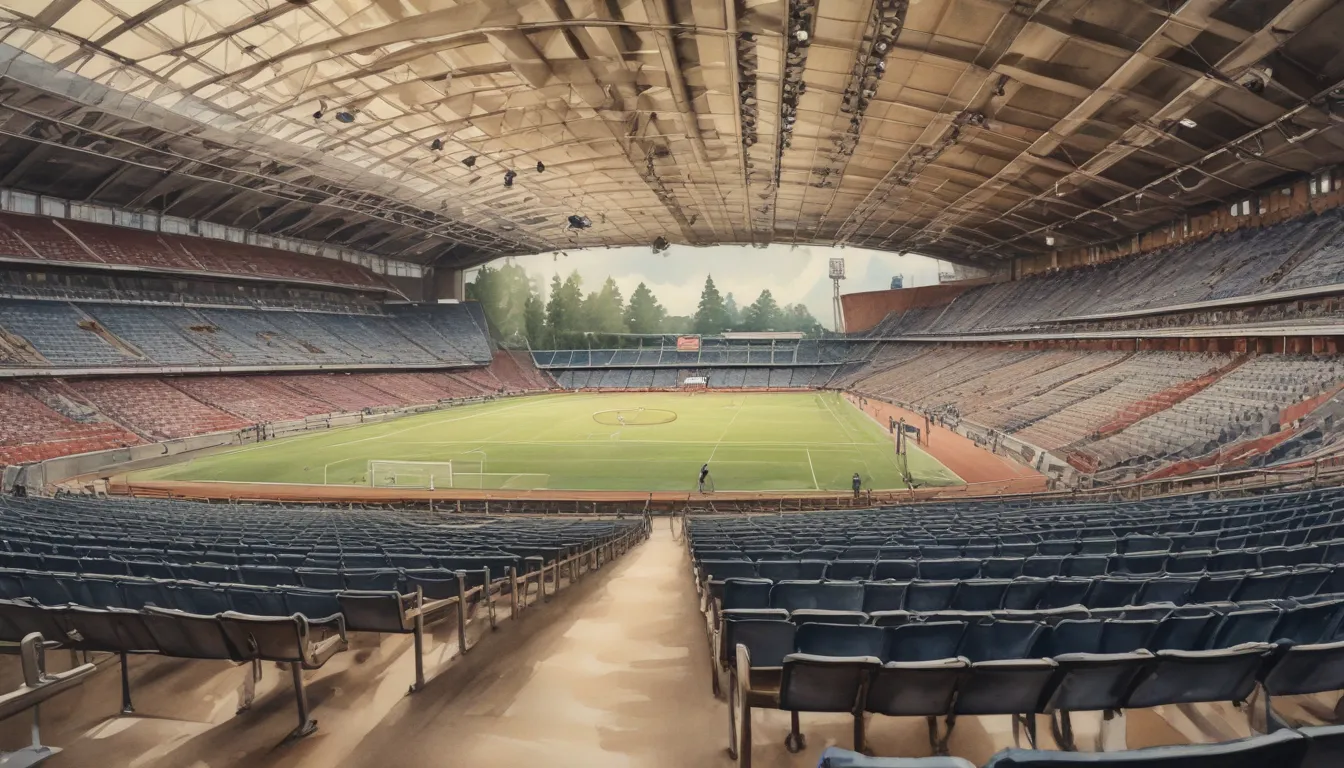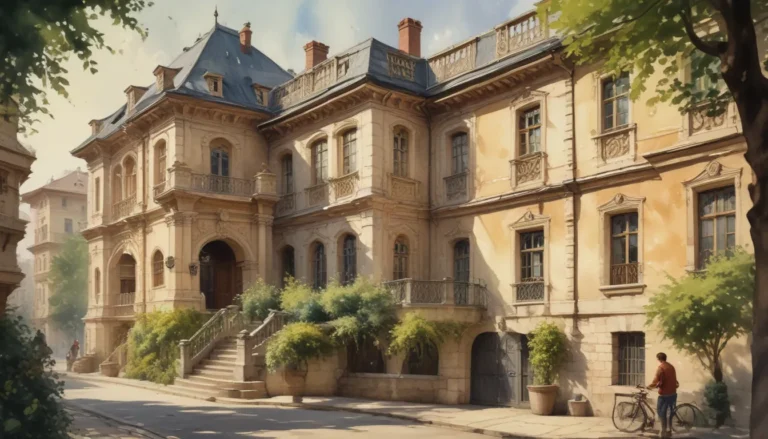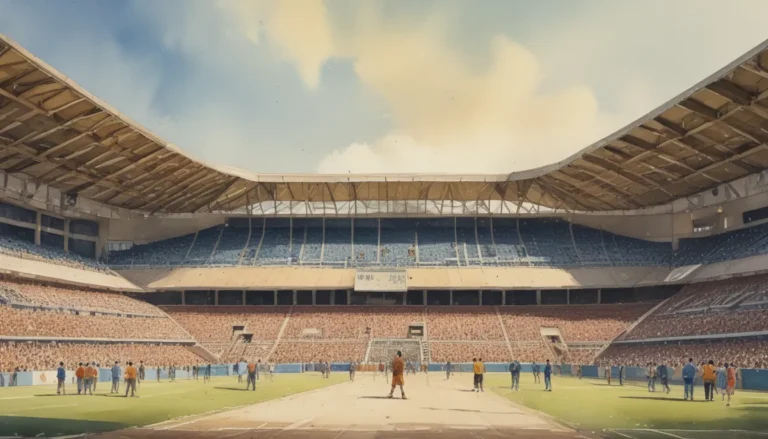The images in our articles are for illustrative purposes only and may not exactly match the content. They are intended to capture your interest and complement the text, not to replace it.
Welcome to the mesmerizing world of the Helsinki Olympic Stadium, a true gem that combines history, sportsmanship, and architectural brilliance. This iconic structure, built for the 1952 Summer Olympics, stands as a symbol of Finnish pride and serves as a testament to the nation’s enduring legacy in sports and culture. Situated in the heart of Helsinki, this stadium has witnessed numerous historic events and continues to captivate visitors with its unique charm.
Unveiling the Fascinating Facts of Helsinki Olympic Stadium
Let’s embark on a journey to uncover 17 intriguing facts about the Helsinki Olympic Stadium that showcase its significance and rich history. From its impressive design and unique features to its memorable moments and cultural significance, each fact sheds light on the remarkable tapestry of this iconic landmark.
-
The Helsinki Olympic Stadium was built for the 1940 Olympic Games: The construction of this magnificent stadium began in 1934 in anticipation of the Olympic Games scheduled to be held in Helsinki in 1940. Unfortunately, due to the outbreak of World War II, the games were canceled, leading to the delayed inauguration of the stadium in 1952.
-
Iconic Example of Functionalism: Designed by architects Yrjö Lindegren and Toivo Jäntti, the Helsinki Olympic Stadium is a shining example of Functionalist architecture. Its sleek design, characterized by clean lines and concrete elements, embodies the principles of simplicity and efficiency synonymous with the movement.
-
Tower Offering Breathtaking Views: Nestled at the heart of the stadium, the iconic tower stands tall at a height of 72 meters, providing visitors with a spectacular panoramic view of the stunning city of Helsinki. Housing the Stadium Museum, the tower offers a glimpse into the rich history of the Olympic Games and the stadium itself.
-
Unique Lighting System: Renowned for its cutting-edge lighting system, the Helsinki Olympic Stadium dazzles spectators with vibrant light displays during special events and celebrations. These mesmerizing displays have become a trademark feature of the stadium, captivating audiences both near and far.
-
Historic Performances: In the 1952 Olympic Games, held at the stadium, Czechoslovakian long-distance runner Emil Zátopek achieved a historic feat by winning three gold medals in the 5,000 meters, 10,000 meters, and marathon events. His remarkable achievements solidified his place as one of the greatest athletes of all time.
-
Special Finnish Grass: The playing surface of the Helsinki Olympic Stadium boasts a unique variety of grass known as “Hakkarainen grass.” Renowned for its durability and resilience to harsh weather conditions, this grass ensures optimal playing conditions for athletes while enhancing the overall aesthetics of the stadium.
-
Iconic Concert Venue: Over the years, the Helsinki Olympic Stadium has hosted legendary concerts featuring iconic bands and musicians such as Metallica, U2, Madonna, and Beyoncé. The stadium’s grandeur and acoustics have made it a preferred destination for unforgettable musical performances.
-
Venue for the 1952 Olympic Games: Following the cancellation of the 1940 Olympic Games, Helsinki had the honor of hosting the event in 1952. The Helsinki Olympic Stadium played a pivotal role in hosting the opening and closing ceremonies, along with various sporting events that captured the attention of the world.
-
Major Renovation: In preparation for the 2005 World Athletics Championships, the Helsinki Olympic Stadium underwent a significant renovation to modernize its facilities and enhance the spectator experience while preserving its iconic features and historical significance.
-
Impressive Olympic Memorabilia Exhibit: Within the stadium, visitors can explore the Olympic Memorabilia Exhibition, featuring a vast collection of artifacts and memorabilia from past Olympic Games. From medals and torches to iconic sports equipment, the exhibition offers a captivating glimpse into the history of the Olympic movement.
-
Cultural Venue: Apart from sports events, the stadium hosts a variety of cultural festivals and performances, thanks to its open-air setting and remarkable acoustics. It serves as a perfect venue for large-scale cultural celebrations and outdoor events.
-
Surrounded by Parkland: Situated in the picturesque Töölö district, the Helsinki Olympic Stadium is surrounded by beautiful parkland and green spaces, offering visitors a serene atmosphere and stunning views of the stadium.
-
Symbol of Finnish Pride: The Helsinki Olympic Stadium stands as a symbol of Finnish pride and sporting achievement, representing the nation’s enduring Olympic legacy and architectural prowess. Its unique blend of history, culture, and athleticism continues to captivate visitors from around the globe.
Your Journey Awaits at Helsinki Olympic Stadium
As you delve into the fascinating world of the Helsinki Olympic Stadium, you discover a harmonious blend of history, culture, and sportsmanship that leaves you inspired and captivated. Whether you’re a sports enthusiast, a history buff, or a curious traveler, the stadium’s grandeur and allure offer a truly unforgettable experience.
FAQs
- When was the Helsinki Olympic Stadium built? The Helsinki Olympic Stadium was built in 1938.
- How many spectators can the stadium accommodate? The stadium can accommodate up to 40,000 spectators.
- Is the Helsinki Olympic Stadium still in use? Yes, the stadium is still in use for various sports events, concerts, and cultural activities.
- Can visitors access the rooftop terrace? Yes, visitors can access the rooftop terrace and enjoy panoramic views of Helsinki.
- Is there a museum inside the stadium? Yes, there is a sports museum inside the stadium showcasing the history of Finnish sports.
- Are guided tours available? Yes, guided tours are available for visitors wanting to explore the stadium and learn about its history.
- Is the stadium wheelchair-accessible? Yes, the Helsinki Olympic Stadium is wheelchair-accessible with ramps and elevators for easy navigation.
- Can I attend sporting events at the stadium? Absolutely! The stadium hosts a variety of sporting events, including football matches and track and field competitions.
- Are there any restaurants or cafes inside the stadium? Yes, there are restaurants and cafes inside the stadium where visitors can enjoy meals and refreshments.
- What other attractions are nearby? Nearby attractions include the Helsinki Olympic Tower, Linnanmäki Amusement Park, and the Finnish National Opera.
Explore the Magic of Helsinki Olympic Stadium
Embark on a journey to the heart of Finnish sportsmanship and culture as you immerse yourself in the beauty and history of the Helsinki Olympic Stadium. From its towering structure to its rich heritage, this iconic landmark awaits your visit to unveil its captivating allure. Don’t miss the chance to witness the legacy of the Helsinki Olympic Stadium and create unforgettable memories in the heart of Helsinki.






